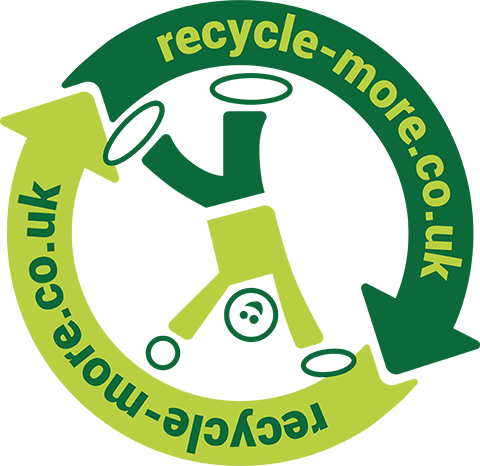
Electronics- Recycling Process
How are electronics recycled?
How are fridges recycled?
This is the recycling process used for fridges, we have also listed the end materials which are recovered from fridges.
- Liquid coolants are manually extracted (mixture of oil and gasses) from the cooling circuits
- The fridges are shredded in a self-contained environment, with automated control systems used to monitor gas and temperature levels
- The insulation foam, which can be found in the outer panels of fridges, is ground down to a powder at a controlled temperature to release the remaining ozone-depleting gases
- The recovered gases are subsequently cooled to temperatures as low as -170°C by the injection of liquid nitrogen, which helps to control oxygen levels and prevent explosions (Advanced carbon filtration technology can also be used to achieve the same result)
- As required under the government's recovery standard, ozone-depleting gases are removed and destroyed by specialist incineration at temperatures exceeding 1,200°C
- High recycling rates are achieved, with the recovery of end products such as steel, aluminium and plastics. These are recovered using a mix of processes including light refraction, eddy current separation and magnets
How are large household electrical appliances recycled?
Examples of large domestic appliances include:
Washing machines, clothes dryers, dish washing machines, electric stoves, electric hot plates, microwaves.The recycling process
The recycling process is a two stage process. We have also added some links to EMR Ltd, which help illustrate the different stages of the process.
Stage 1
Large domestic appliances are shredded. These break up the appliances to liberate the materials (see image below)Ferrous metal (steel) is magnetically separated, electric motor armatures are hand picked for recycling and light dust and dirt is sucked off for disposal
Stage 2
The heavy residue from the shredders is taken to a 'dense media separation plant'The non-ferrous metal and other materials (including washing machine ballast weights) are separated using a number of mineral processing techniques. These techniques include floating/ sinking minerals in liquids of different densities, separating materials using eddy current separation and hand picking materials at different stages
How are small household electrical appliances recycled?
There are two different ways that small domestic electrical appliances can be recycled.
Here we look at one of the main processes used in the UK:
- Small domestic electrical appliances are collected from household waste recycling centres and taken to a recycling plant, where the appliances are sorted into batches
- The appliances go into a hammer mill which smashes the WEEE into small fragments
- These are passed along a conveyor to a magnetic separator to remove most of the ferrous (steel) metals. At the same time, suction is applied to draw off any lightweight debris, such as dirt from vacuum cleaners and grass cuttings from lawnmowers
- The non-ferrous and non-metallic fraction passes over a rare earth magnet to remove more metals, and on to an eddy current separator to remove the aluminium content and other metals
- At various points on both the ferrous and non-ferrous conveyors, manual picking stations are used to separate motor armatures comprising both ferrous and non-ferrous metals
- These picking stations also remove any batteries that must be removed in accordance with the Waste Electrical and Electronic Equipment (WEEE) Directive
- The non-metallic, mainly plastic fraction falls into a bin, where it is collected and transported onward to a plastic recycling company in the UK for further separation and refinement
- The metals that have been separated are bulked up and either sold to smelters in the UK or exported to accredited reprocessors overseas
End products made from recycled small electrical appliances
- Metals (ferrous and non-ferrous)
- Plastic
- Circuit boards - These often include precious metals which are recovered by specialist companies
- Cables
- Batteries
- Cardboard
- Electric motors
How is display equipment (monitors and televisions) recycled?
There are three stages to recycling display equipment. The materials in the table below are recovered from these electrical items.
Cathode Ray Tubes (CRTs) are removed. A specialist glass processor will recycle them back into CRT glassLCD units have the fluorescent tubes removed and these are specially recycledThe units are then manually disassembled into metal and plastic fractions, the separate materials are then usually sent onto specific recycling plants where they can then be turned into something new.
End products made from recycled monitors
- Glass
- Plastic
- Ferrous metal
- Non-ferrous metal
- Cables
- Circuit boards
Where can I recycle electrical appliances?
Just type your postcode into the recycling locator and select which material you would like to recycle.









